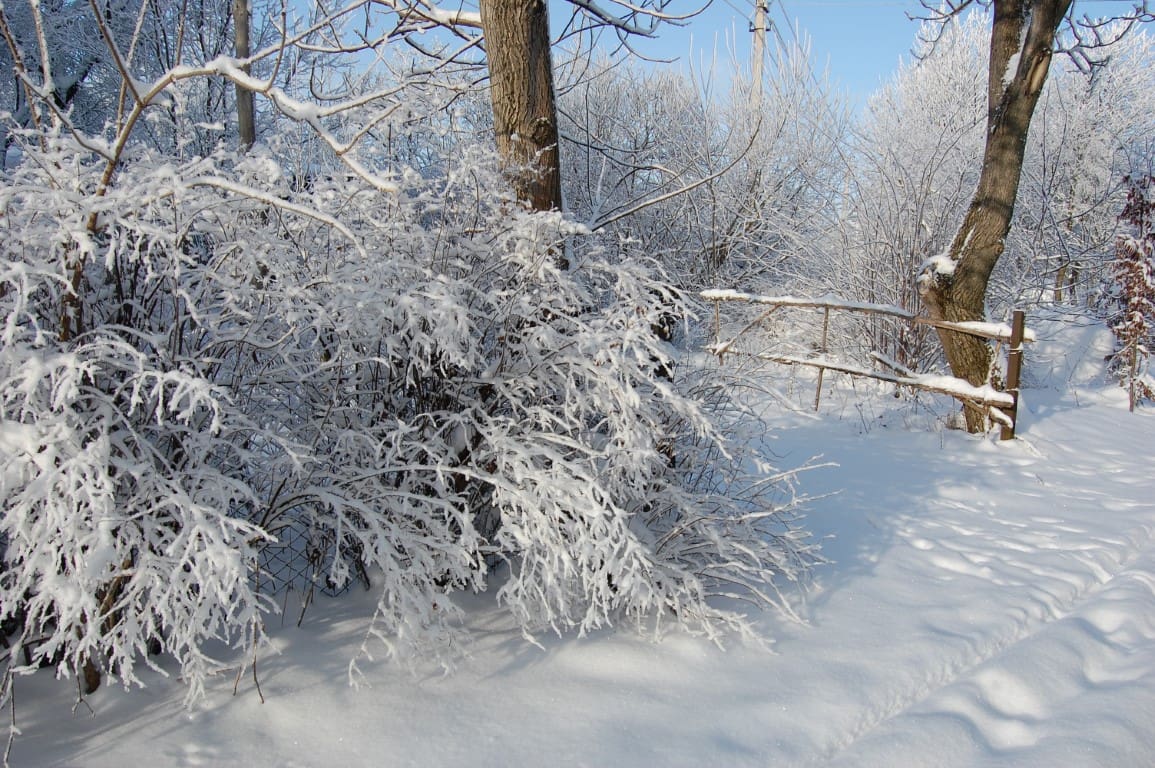
If you are feeling overwhelmed by the brutality of severe cold weather, imagine what trees are experiencing as they are exposed 24/7 to the elements. They may be dormant in the winter months, but trees still feel the stress caused by the harsh cold.
There is no hot chicken soup nor warm layers of thermals and woollies for them, but there are still certain measures you can take to help them make it through the worst of the weather – and extend their survival by several years in the process:
# 1: Mulching
Starting in late fall or early winter, add a thin layer of organic mulch under the tree’s drip line. Make sure the layer is not more than two inches. Mulch helps insulate soil and tree roots and slows down water loss. Remember not to place mulch directly against the trunk. Mulching should be done when the ground starts to freeze or else you could end up with the tricky problem of getting rid of rodents who find it a perfect spot to spend their winters.
# 2: Watering
It would be wrong to assume trees only need to be watered in hot weather. They should be watered up until the ground freezes. This is especially the case for newly-planted trees which need extra care. Before freezing temperatures set in, you must remove irrigation bags around the trunk. At the slightest sign of a thaw, you need to water your trees to keep them hydrated and replenished.
# 3: Wrapping
Protect your trees from sunscald. The sun in winter thaws out tree trunks, while at night, the cold air can freeze them. This leads to cracks in the trunk. To prevent this, use crepe paper tree wrap, and, working from the bottom of the tree upward, wrap the tree trunk. Once you reach the lower branches, STOP! The wrap can stay there until spring. Another way for you to beat sunscald is by painting the tree white. (An interesting factoid: trees planted to the west or south of buildings are more vulnerable to sunscald.)
# 4: Pest Control
You may have noticed how your pet dog likes to chew up furniture. Similarly, pesky rodents love chewing the outer and inner bark of trees. This exposes the inner wood of the trunk, making your tree even more vulnerable to the harsh weather.
Rodents can be kept away with the help of plastic tree guards. Wrap them around the trunk working from the bottom up and past the snow line. Not only do the guards keep rodents out, but allow the bark to mature in peace and develop fissures, which rodents hate to chew. Remember to remove the tree guard before spring.
# 5: Snow Removal
While snow on tree branches makes for a pretty picture, the sheer weight can also bring them down. You can remove the snow very gently by pushing upward on the branches. The snow will then fall to the ground, and the branches will once again become visible. To remove ice, don’t try to break the icicles off, as this action hurts the tree. A gentler way is to hose branches down with warm water. (Remember, if the water is too hot, your tree could actually suffer burns!)
# 6: Pruning
Winter provides a great opportunity for inspecting and pruning trees. You can easily see the total shape of the tree and figure out which branches could be a problem. Pruning in winter, when trees are dormant, can help stop the spread of disease.

